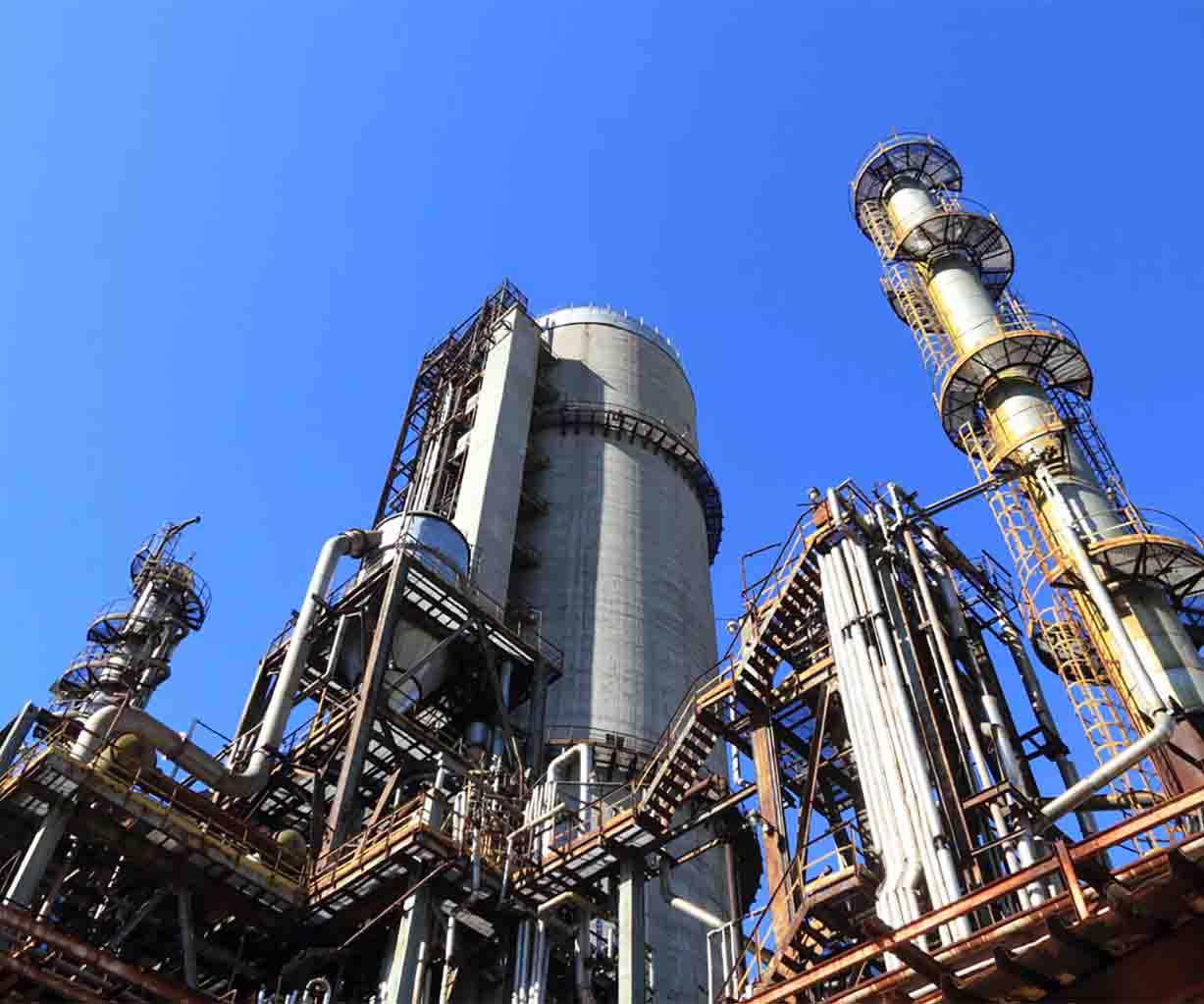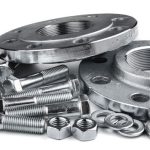上海鸿隆金属材料有限公司
UNS S31254 (254 SMO): A Comprehensive Guide for Industrial Applications
1. Introduction
UNS S31254 (254 SMO) is a high-alloy austenitic stainless steel known for its exceptional resistance to chloride-induced corrosion, pitting, and crevice corrosion. It was originally developed to address the needs of industries operating in harsh marine and chemical processing environments where conventional stainless steels, like 316L, fall short. With a combination of high molybdenum and nitrogen content, UNS S31254 (254 SMO) offers a superior solution for resisting corrosion, making it ideal for demanding applications in the oil and gas, chemical processing, pulp and paper, and marine industries.
The alloy also provides excellent strength, formability, and weldability, which makes it versatile for various forms of manufacturing, including pipes, tubes, plates, and other product forms.
2. Available Products and Specifications
Equivalent Grades:
Standard
Grade
Common Name
254 SMO
UNS Number
S31254
DIN
1.4547
EN
X1CrNiMoCuN20-18-7
ISO
X1CrNiMoCuN20-18-7
JIS
SUS312L
W. Nr.
1.4547
Related Product Standards:
Standard
Designation
ISO
ISO 15510
EN
EN 10088-1, EN 10028-7
ASTM
A240 (Plates), A312 (Pipes), A479 (Bars), A182 (Forgings)
ASME
SA240, SA312, SA479, SA182
JIS
G4304 (Plates), G4303 (Bars), G3459 (Pipes)
Available Product Forms:
Pipe
Tube
Plate
Sheet
Strip
Bar
Rod
Wire
Forging Stock
3. Applications
UNS S31254 (254 SMO) is commonly used in industries where high resistance to chloride stress corrosion, pitting, and crevice corrosion is essential. Its applications include:
Oil and Gas: Ideal for heat exchangers, flowlines, piping systems, and components exposed to seawater or sour gas environments.
Chemical Processing: Excellent in handling aggressive acids, such as sulfuric and phosphoric acid, and equipment exposed to highly corrosive environments.
Pulp and Paper: Used in bleaching plants, digesters, and other components exposed to aggressive chemicals like chlorine dioxide and sodium hydroxide.
Marine and Offshore: Suited for seawater piping, desalination plants, and marine hardware due to its superior resistance to saline and chloride-rich conditions.
Air Pollution Control: Components in flue gas desulfurization (FGD) systems, which operate in acidic and high-temperature environments.
Power Generation: In heat exchangers and other high-stress components.
Food Processing, Biochemicals, and Pharmaceuticals: Used for sanitary equipment due to its non-reactive surface and corrosion resistance in clean and high-purity environments.
4. Corrosion Resistance Properties
The standout feature of UNS S31254 (254 SMO) is its resistance to several forms of corrosion:
Pitting and Crevice Corrosion: Thanks to its high molybdenum (6%) and nitrogen content, it offers superior resistance to pitting and crevice corrosion in chloride-rich environments.
Stress Corrosion Cracking: 254 SMO outperforms traditional stainless steels like 304L and 316L in environments with high chlorides, reducing the risk of stress corrosion cracking.
General Corrosion: The high chromium and nickel content provide excellent resistance to uniform corrosion in both acidic and neutral solutions.
Intergranular Corrosion: The low carbon content helps prevent carbide precipitation, which reduces the risk of intergranular corrosion after welding.
5. Physical and Thermal Properties
Property
Value
Density
8.0 g/cm³
Melting Range
1320–1390°C (2408–2534°F)
Thermal Conductivity (at 20°C)
14.5 W/m·K
Specific Heat (at 20°C)
500 J/kg·K
Coefficient of Thermal Expansion
15 × 10⁻⁶ /K
Electrical Resistivity (at 20°C)
0.85 μΩ·m
6. Chemical Composition
The typical chemical composition of UNS S31254 (254 SMO) is:
Element
Content (%)
Chromium (Cr)
19.5 – 20.5
Nickel (Ni)
17.5 – 18.5
Molybdenum (Mo)
6.0 – 6.5
Nitrogen (N)
0.18 – 0.22
Copper (Cu)
0.5 – 1.0
Carbon (C)
≤ 0.020
Manganese (Mn)
≤ 1.0
Silicon (Si)
≤ 0.80
Phosphorus (P)
≤ 0.030
Sulfur (S)
≤ 0.010
7. Mechanical Properties
The mechanical properties of UNS S31254 (254 SMO) provide both high strength and ductility:
Property
Value
Tensile Strength
650 – 850 MPa
Yield Strength
≥ 310 MPa
Elongation
≥ 35%
Hardness (Brinell)
≤ 210 HB
8. Heat Treatment
Solution annealing at temperatures between 1150°C and 1200°C (2102°F–2192°F) followed by rapid cooling, typically water quenching, restores the alloy’s corrosion resistance and mechanical properties. This process is essential after forming or welding to maintain the austenitic structure and prevent the formation of detrimental phases.
9. Forming
UNS S31254 (254 SMO) has good formability and can be formed using conventional cold and hot forming techniques. However, due to its higher strength, more powerful equipment may be needed for cold forming. Post-forming annealing is recommended to restore the material’s properties, especially after severe cold work.
10. Welding
UNS S31254 (254 SMO) is highly weldable using standard welding methods such as TIG, MIG, and manual arc welding. Low heat input is advised to prevent overheating and potential phase formation. Filler materials that match the composition of 254 SMO, such as AWS A5.9 ERNiCrMo-3, are recommended to maintain the alloy’s corrosion resistance and strength.
11. Corrosion of Welds
Welds in UNS S31254 (254 SMO) are resistant to corrosion when proper welding procedures are followed. However, it’s essential to minimize heat input to avoid carbide precipitation, which can lead to sensitization and increased susceptibility to intergranular corrosion.
12. Descaling, Pickling, and Cleaning
Due to its high alloy content, proper descaling and pickling are necessary after heat treatment and welding to remove oxides and restore corrosion resistance. A combination of nitric and hydrofluoric acids is typically used for pickling. After pickling, thorough rinsing with clean water is required to remove any residual acids.
13. Surface Hardening
Like most fully austenitic stainless steels, UNS S31254 (254 SMO) cannot be surface-hardened using traditional methods such as carburizing or nitriding. However, cold working can increase its strength through work hardening, which may be beneficial for certain applications requiring higher surface strength.
Conclusion
UNS S31254 (254 SMO) is a superior choice for demanding environments that require high corrosion resistance and strength. Its ability to withstand chloride-induced corrosion, pitting, and crevice corrosion makes it the go-to material for industries such as oil and gas, chemical processing, pulp and paper, and marine applications. With excellent formability, weldability, and corrosion resistance properties, 254 SMO provides long-lasting, reliable solutions for components exposed to harsh environments.
For users needing a material that excels in extreme conditions while maintaining its structural integrity and corrosion resistance, UNS S31254 (254 SMO) delivers the perfect balance of performance, reliability, and ease of use.
ECOSYSTEM
Positive growth.
Nature, in the common sense, refers to essences unchanged by man; space, the air, the river, the leaf. Art is applied to the mixture of his will with the same things, as in a house, a canal, a statue, a picture.
But his operations taken together are so insignificant, a little chipping, baking, patching, and washing, that in an impression so grand as that of the world on the human mind, they do not vary the result.



Undoubtedly we have no questions to ask which are unanswerable. We must trust the perfection of the creation so far, as to believe that whatever curiosity the order of things has awakened in our minds, the order of things can satisfy. Every man’s condition is a solution in hieroglyphic to those inquiries he would put.



